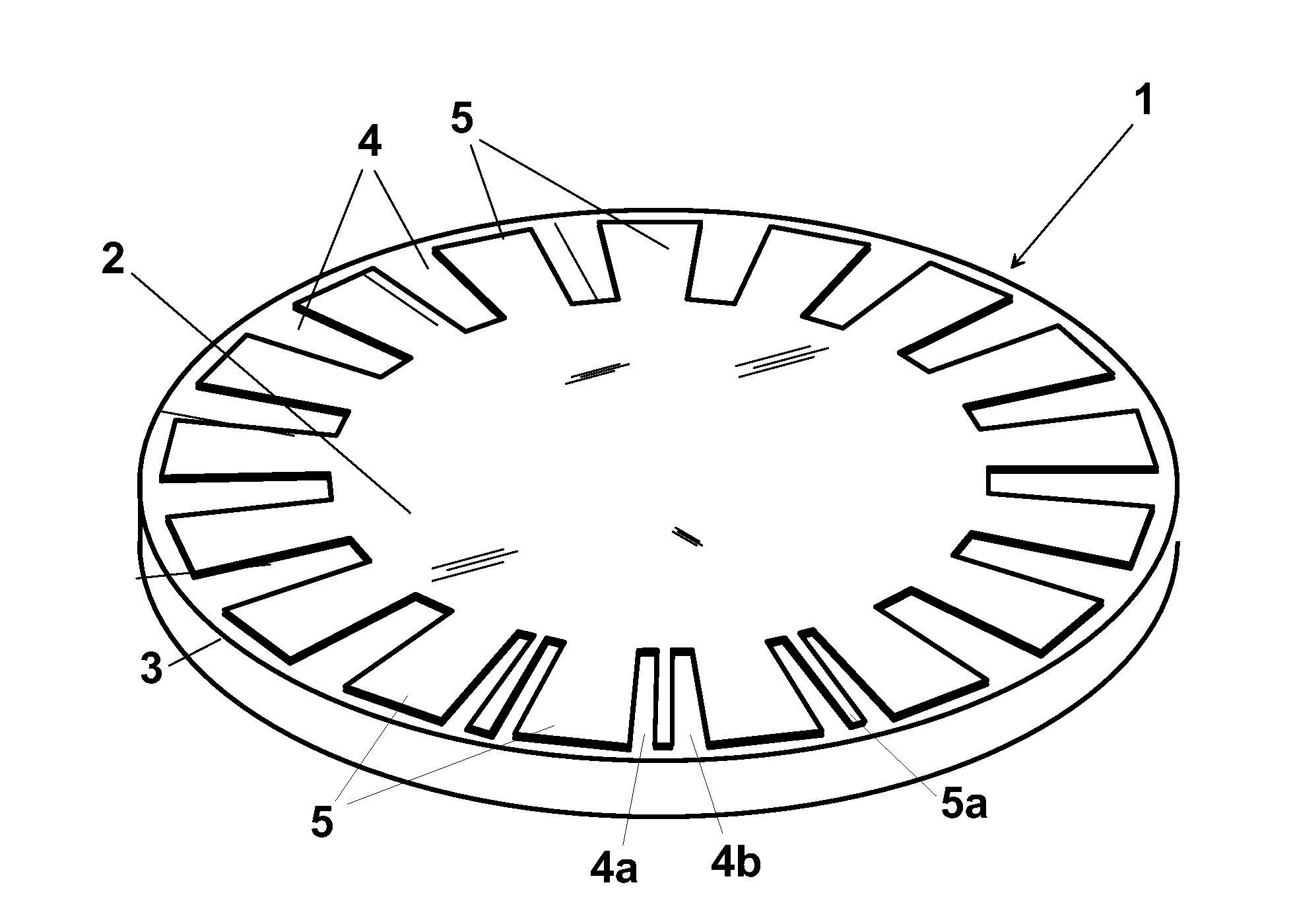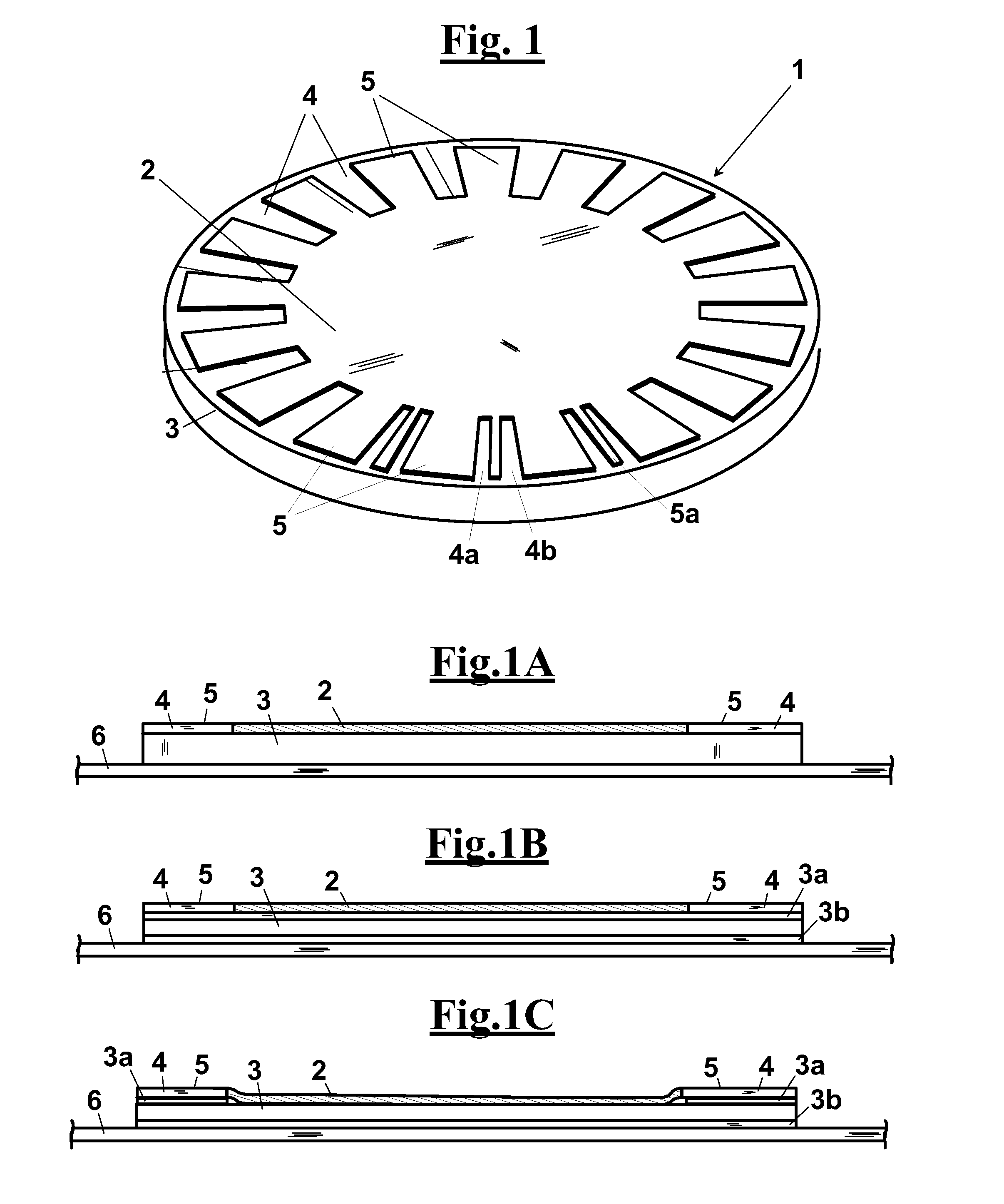Circular semiconductor lasers having lattices for vertical emission
a semiconductor laser and vertical emission technology, applied in semiconductor lasers, instruments, optical elements, etc., can solve the problems of affecting the practical utility of circular geometry resonators, scarce practical use, and the inability of vcsel to be used with devices based on quantum-cascade principles, so as to achieve maximum output power in the vertical direction and control the amount of feedback
- Summary
- Abstract
- Description
- Claims
- Application Information
AI Technical Summary
Benefits of technology
Problems solved by technology
Method used
Image
Examples
Embodiment Construction
[0074]In the following description, as circular resonator a disc or ring plane resonator is intended, as well as an elliptical resonator, or a rectangular circularly or elliptically ending resonator is used, which can operate according to the mode “whispering gallery”.
[0075]With reference to FIGS. 1 and 1A, in a first exemplary embodiment of the present invention, a disk shaped laser resonator 1 comprises an outer layer 2, mounted on an active region 3, at the boundary of which radial cuts 4 are made, through which inner active regions 3 are visible.
[0076]In FIG. 1 two possible versions of the cuts are shown, i.e. either an open cut 4, or a preferred version for THz QCLs, where two slits 4a and 4b are provided that are close to each other, separated by uncut portions 5a. In other embodiments, not shown in this figure, a plurality of slightly spaced apart slits are possible.
[0077]According to an aspect of the invention, the number of cuts 4 can be a prime number, for example five, se...
PUM
 Login to View More
Login to View More Abstract
Description
Claims
Application Information
 Login to View More
Login to View More - R&D
- Intellectual Property
- Life Sciences
- Materials
- Tech Scout
- Unparalleled Data Quality
- Higher Quality Content
- 60% Fewer Hallucinations
Browse by: Latest US Patents, China's latest patents, Technical Efficacy Thesaurus, Application Domain, Technology Topic, Popular Technical Reports.
© 2025 PatSnap. All rights reserved.Legal|Privacy policy|Modern Slavery Act Transparency Statement|Sitemap|About US| Contact US: help@patsnap.com



